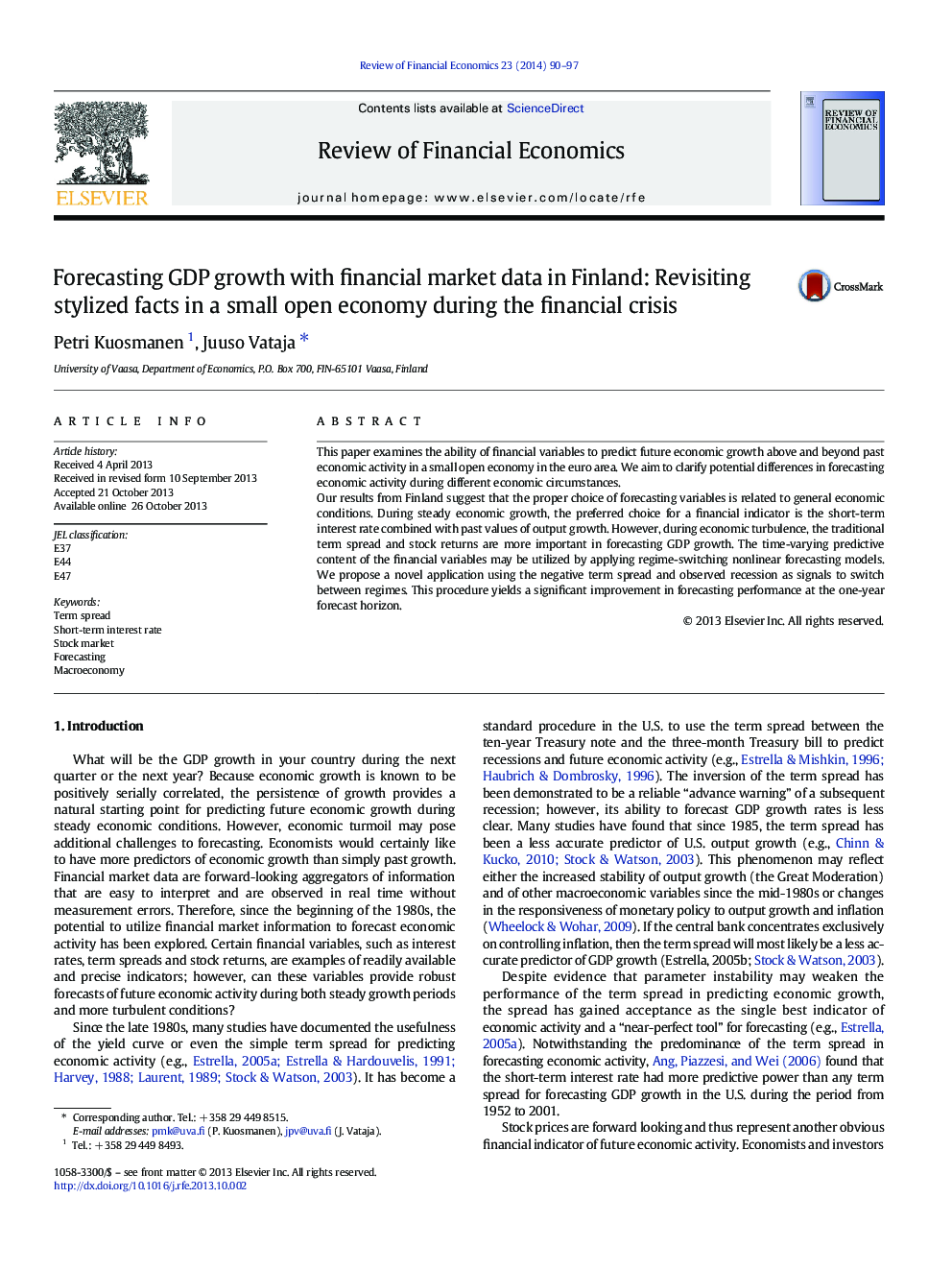| Article ID | Journal | Published Year | Pages | File Type |
|---|---|---|---|---|
| 986691 | Review of Financial Economics | 2014 | 8 Pages |
This paper examines the ability of financial variables to predict future economic growth above and beyond past economic activity in a small open economy in the euro area. We aim to clarify potential differences in forecasting economic activity during different economic circumstances.Our results from Finland suggest that the proper choice of forecasting variables is related to general economic conditions. During steady economic growth, the preferred choice for a financial indicator is the short-term interest rate combined with past values of output growth. However, during economic turbulence, the traditional term spread and stock returns are more important in forecasting GDP growth. The time-varying predictive content of the financial variables may be utilized by applying regime-switching nonlinear forecasting models. We propose a novel application using the negative term spread and observed recession as signals to switch between regimes. This procedure yields a significant improvement in forecasting performance at the one-year forecast horizon.
